- Administrator
- Albums and Singles
 Louise Bock is the latest guise of iconoclastic composer Taralie Peterson, who is best known for her role in psych-folk luminaries Spires That in the Sunset Rise. It is probably fair to describe some of her previous work as "polarizing" or "an acquired taste," as she is not one to shy away from dissonance or nerve-jangling intensity. However, it is also fair to say that she has recorded some truly transcendent and impressively wild pieces over the years. In some ways, Abyss: For Cello captures Peterson in comparatively accessible form, but that is mostly because there are limits to how much infernal cacophony one person can create with just a cello and a saxophone. That said, that limit is considerably higher than I would have expected, as Abyss is quite a churning and heaving one-woman tour de force of cello-driven violence. Moreover, it is quite an impressively focused and tightly edited one as well. It is quite a pleasure to witness Peterson's power so beautifully harnessed for maximum impact, particularly on the album's brilliant centerpiece "Oolite."
Louise Bock is the latest guise of iconoclastic composer Taralie Peterson, who is best known for her role in psych-folk luminaries Spires That in the Sunset Rise. It is probably fair to describe some of her previous work as "polarizing" or "an acquired taste," as she is not one to shy away from dissonance or nerve-jangling intensity. However, it is also fair to say that she has recorded some truly transcendent and impressively wild pieces over the years. In some ways, Abyss: For Cello captures Peterson in comparatively accessible form, but that is mostly because there are limits to how much infernal cacophony one person can create with just a cello and a saxophone. That said, that limit is considerably higher than I would have expected, as Abyss is quite a churning and heaving one-woman tour de force of cello-driven violence. Moreover, it is quite an impressively focused and tightly edited one as well. It is quite a pleasure to witness Peterson's power so beautifully harnessed for maximum impact, particularly on the album's brilliant centerpiece "Oolite."
This is the second album that Peterson has recorded as Louise Bock, as the project made its debut back in 2018 with Repetitives in Illocality (Feeding Tube).Prior to that, Peterson's solo albums were released under the name Tar Pet, but she decided that a new name was warranted for her cello-focused works.It is also worth noting that this album is the seventh installment of Geographic North's "Sketches for Winter" series, meaning that it was "composed during and intended for the dead of winter."Having now heard the previous Louise Bock album, I think I can safely say that Abyss's ostensible winter theme has not radically shifted Peterson's tone in any significant way, but this release is a bit more unrelenting in its intensity than its predecessor.In general, however, intensity is a defining trait with most of Peterson's work. In that regard, Peterson gets almost immediately to work on the lead-off "Horologic," as the opening drone quickly descends into a churning miasma of sliding dissonances.There is some bleak beauty to be found in the simplicity of "Horologic" as well, however, as Peterson manages to make the descending, elegiac chord progression feel heaving, sensual, and organic as masses of rich, woody tones languorously plunge and swoop.
The following "Jute" takes shape from a similarly droning foundation, but heads in a very different direction as Peterson saws away at a stuttering melodic fragment that is never allowed to reach completion.At first, it is not nearly as strong as "Horologic," but eventually those paroxysms resolve into a haunting and semi-melodic outro of deep drones.Peterson's saxophone then makes its first appearance with "Actinic Ray," which achieves an intriguing collision of fluttering Philip Glass-style minimalist patterns and Decasia-style ruined and discordant strings.Peterson's palette expands yet again with the gorgeous "Oolite," as the moaning and sliding foundation is fleshed out with a lovely and warm melodic figure and a very cool splash of garbled, ululating vocal sounds.Apparently "Oolite" also features some guest guitar work from Kendra Amalie, but I am hard-pressed to find anything resembling a guitar in the piece, so I suspect she must be somehow involved in the vocal-like sounds.Regardless of who is doing what and how they are doing it, "Oolite" is an absolutely sublime and wonderful piece.The closing "Prithee" returns to more expected territory, however, as a darkly churning bed of gnarled cellos lazily undulates in a state of uneasy ambience that fitfully breaks open to offer glimpses of a more radiant and tender piece lurking beneath.It is quite an impressive compositional achievement, as it feels like it is continually dissolving and reforming while casting a simultaneously brooding, epic, and precariously hopeful spell.
As someone who first encountered Peterson's vision in the wilder, more freeform context of Spires That in the Sunset Rise, I was pleasantly surprised by how tight and exactingly composed this album feels.There is not much about Abyss that feels improvised or at all indulgent, as Peterson has masterfully distilled her art into a perfect and concise series of emotional gut punches.Aside from that, I was also struck by how much some of these pieces transcend their instrumentation.Using a term like "neoclassical" to describe Abyss feels completely misleading and inadequate, as the cello seems like a natural extension of Peterson herself: this does not feel like an album composed for cello—it feels like a cello just happened to be the most effective tool for expressing the harrowing and cathartic sounds that were swirling around her head.That said, it does not hurt that this is a cello album, as I have always loved the warmth and the physicality that accomplished players can wring from that instrument and Peterson makes the most of those attributes (particularly the latter).Regrettably, I have yet not delved deeply enough into either Spires or Tar Pet to confidently assess how this album stacks up against Peterson's oeuvre as a whole, but it is difficult to imagine that she has recorded many pieces that can top "Horologic" or "Oolite."Then again, maybe she has.In any case, Abyss is a hell of an album that captures Peterson in wonderfully fiery and undiluted form.
Samples can be found here.
Read More
- Administrator
- Albums and Singles
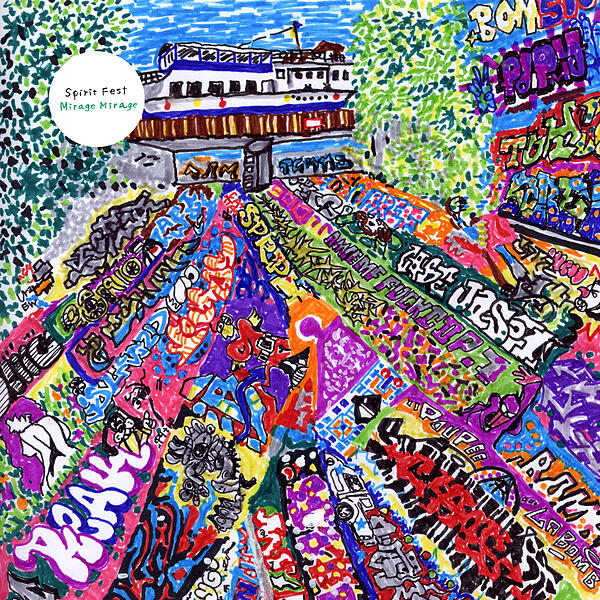 Spirit Fest is a supergroup built around acclaimed Japanese duo Tenniscoats, featuring members of Notwist, Jam Money, and Joasihno. If an album could be adorkable, this fits the bill. Mirage Mirage is an album for flower picking and bubble blowing, and it charmed me from the first listen.
Spirit Fest is a supergroup built around acclaimed Japanese duo Tenniscoats, featuring members of Notwist, Jam Money, and Joasihno. If an album could be adorkable, this fits the bill. Mirage Mirage is an album for flower picking and bubble blowing, and it charmed me from the first listen.
 
Spirit Fest use a treasure trove of odd instrumentation and percussion to assemble their beguiling avant pop songs. The experiment works brilliantly and yields finished pieces that are sweet and pleasant to hear. The whole double disc album is a brisk walk through a studio filled with toy-like instrumentation, including harmonica, kazoo, idly grazed piano, trumpet, recorder or some kind of folk flute, harmonium, triangle, accordion, brushed drum, and a panoply of quirky percussion. To top it all off, most songs include solo or duet vocal tracks exhaled in a puff of smoke, sung in a mix of English and Japanese.
The title song "Mirage" is a standout. The cuckoo whistle and insistent beat makes it sound like a zany clock that never tells the right time. Plucked strings tick the seconds while folky guitars and vocals tell a story of heartbreak. The refrain of "Mirage, Mirage" encircles the cacophony like the spectre of a lost lover.
"Amadoi," my favorite song, sounds like a fawn delicately stepping into the meadow, while the sunlight shimmers its invitation. It consists of the plink-plonk of piano and guitar footsteps, and a warm bed of stately female vocals. "Hi Ma Wa Ri" is a more low key and contemplative, moderately paced song with a touch of swing to it—finger snaps and singing along are welcome. Finally with "Saigo Song" the album concludes with a repeated motif. It feels like a nursery rhyme sung in the round with all the joy of group singing.
I haven't heard a folk pop document so warm, gentle, and playful since another supergroup I love, International Airport. Spirit Fest's clever and exploratory compositions present as polished, easily digestible folky pop, with an innocence and levity that evokes a sense of nostalgia for simpler times.
Read More
- Administrator
- Albums and Singles

Hot on the heels of our crucial Deep Listening double LP is another essential reissue enjoying its vinyl debut on Important Records. This is the first in a 3 part series of vinyl releases for Tod Dockstader's Aerial 1-3. Tod Dockstader's Aerial series, an electronic/drone masterpiece, is cherished among fans of the artist's work and this first volume is available in a double LP edition of 500 copies with 100 copies on clear vinyl exclusively for Imprec mailorder customers.
15 years in the making, Tod Dockstader's Aerial series is sourced from his life-long passion for shortwave radio. Dockstader collected over 90 hours of recordings, made at night, and comprised of cross signals and fragments plucked from the atmosphere.
Opening with airwave drones, Dockstader gradually allows elements to slowly come and go, summoning an ominous atmosphere of ethereal cloud clouds. Malignant placidity continues, giving the feeling of eavesdropping upon late-night audio activity not unlike discovering number stations while sweeping the dials. These sounds pull you in as their density and rhythms come and go.
Backward voices, deep echoing choruses of conversations flowing under the surface, ocean sounds, pulsing electro-rhythms, all seem to be created via the collaging of many hours of source recordings. A masterwork of collage and juxtaposition by an overlooked pioneer of American electronic music.
Artwork by John Brien (Imprec) is inspired by the propagation of shortwave radio signals throughout the earth's atmosphere.
More information can be found here.
Read More
- Administrator
- Albums and Singles

There is that instance, when you are passing over a threshold, where the before and after fall away and it is only the threshold itself that you are existing within - that neutral space of the in-between, of the transition, that becomes the actual lived-in moment. It is through fully occupying and being present in that transitional space that we are able to access new perspectives that allow for a reassessment of things previously thought understood. The five tracks that make up Everything Evaporate feel like a sustained moment of focus during a period of transition; a longer breath taken in that actual lived-in moment.
You find in the paintings of Helen Frankenthaler, when two colors meet, a bleed that washes out the boarder; a porousness that feels like a fleeting but significant transitory event. The idea of a "crossing" comes to mind - the willingness to extend oneself from one place out towards another. For Atkinson this willingness manifests through language and through the inventing of new stories as a method of reaching across and creating the possibilities for connection.
Spectral drones, gongs, bells, pianos and marimbas accompany Atkinson’'s voice, but now we also find laconic pitch-shifted conversationalists and digitally harmonized chanteuses joining in. As mesmerizing as the narrators voice is at the center of these tracks, it is the addition of other voices that produces the heteroglossic complexities. These are the voices that most often morph into pure sonic materiality; they exist just under the surface of the music creating texture and rhythm while occasionally pushing their way into the foreground with abstracted extrapolations. And it is through the summing of these many voices that a fractal image emerges, at once both singular and plural.
Everything Evaporate was produced after a year of travel and shows. It is, in a sense, a reassessed document of public performance with improvised studio interventions acting to break the linear stream of the live-on-stage temporality. There is a resonance between these in-studio improvisations of Atkinson's and Frankenthaler's paint pores: Before executing the performative action materials are considers, processes are devised and then, with fluid gesture, the event happens. In Everything Evaporate it is through a trust in materials, process and gesture that new melodies and language become available and new narratives pool and find form.
There are many moments within these piece that hint at the sensation of falling asleep while reading a novel - the stories, images and characters follow you into your unconscious but also wait for you on the page; you walk a liminal edge and wander that threshold of consciousness where the book and your imagination become intertwined. As this threshold is crossed your understanding of what has been given to you and what you have created for yourself is obscured, a new space opens up and new stories are revealed.
More information can be found here.
Read More
 On the eighth solo album from the French-based British musician behind Third Eye Foundation, it's impossible to not compare Elliott's delivery to late bard Leonard Cohen. Elliott's accomplished Spanish guitar craft further add to the resemblance, particularly if followed by Cohen's final album "Thanks for the Dance." Working as a solo artist since 2003, Elliott has achieved a new aural mastery on his latest work. At the start of the new decade, we face anticipatory grief, a collective loss of safety, and ultimately have been forced to bid "Farewell to All We Know." Many artists use songwriting as a way of making sense of a bewildering world, and Elliott has crafted a perfectly timed accompaniment to grief, offering resignation and renewal with his heartfelt message "Maybe the storm has passed and devastated everything, now we just have to rebuild and live again."
On the eighth solo album from the French-based British musician behind Third Eye Foundation, it's impossible to not compare Elliott's delivery to late bard Leonard Cohen. Elliott's accomplished Spanish guitar craft further add to the resemblance, particularly if followed by Cohen's final album "Thanks for the Dance." Working as a solo artist since 2003, Elliott has achieved a new aural mastery on his latest work. At the start of the new decade, we face anticipatory grief, a collective loss of safety, and ultimately have been forced to bid "Farewell to All We Know." Many artists use songwriting as a way of making sense of a bewildering world, and Elliott has crafted a perfectly timed accompaniment to grief, offering resignation and renewal with his heartfelt message "Maybe the storm has passed and devastated everything, now we just have to rebuild and live again."
- Administrator
- Albums and Singles
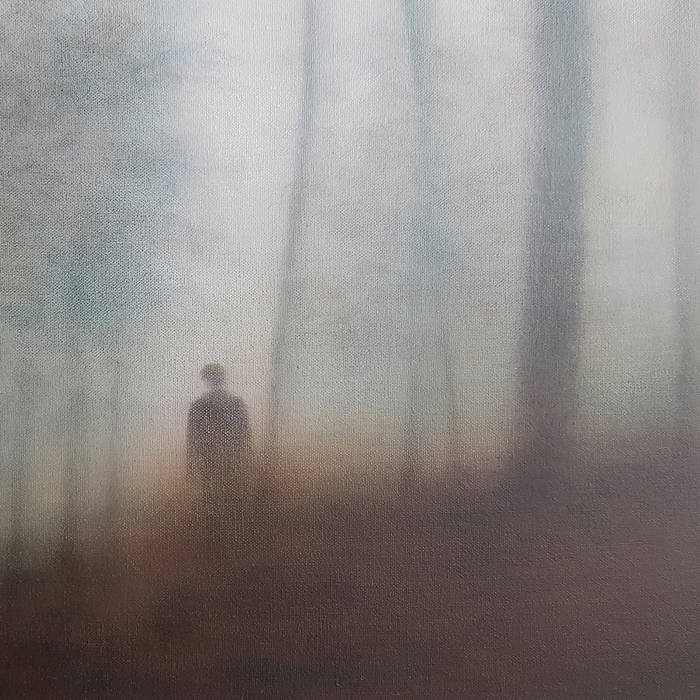 On the eighth solo album from the French-based British musician behind Third Eye Foundation, it is impossible to not compare Elliott's delivery to late bard Leonard Cohen. Elliott's accomplished Spanish guitar craft further add to the resemblance, particularly if followed by Cohen's final album Thanks for the Dance. Working as a solo artist since 2003, Elliott has achieved a new aural mastery on his latest work. At the start of the new decade, we face anticipatory grief, a collective loss of safety, and ultimately have been forced to bid Farewell to All We Know. Many artists use songwriting as a way of making sense of a bewildering world, and Elliott has crafted a perfectly timed accompaniment to grief, offering resignation and renewal with his heartfelt message "Maybe the storm has passed and devastated everything, now we just have to rebuild and live again."
On the eighth solo album from the French-based British musician behind Third Eye Foundation, it is impossible to not compare Elliott's delivery to late bard Leonard Cohen. Elliott's accomplished Spanish guitar craft further add to the resemblance, particularly if followed by Cohen's final album Thanks for the Dance. Working as a solo artist since 2003, Elliott has achieved a new aural mastery on his latest work. At the start of the new decade, we face anticipatory grief, a collective loss of safety, and ultimately have been forced to bid Farewell to All We Know. Many artists use songwriting as a way of making sense of a bewildering world, and Elliott has crafted a perfectly timed accompaniment to grief, offering resignation and renewal with his heartfelt message "Maybe the storm has passed and devastated everything, now we just have to rebuild and live again."
This is bleak but warm folk, embellished with gorgeous classical arrangements of composer David Chalmin, Katia Labèque's minimalist piano, Gaspar Claus' cello, and bass of Jeff Hallam. The album works its way through different stages of grief, presenting first the opening instrumental "What Once Was Hope" before segueing into the title track. In it, Elliott offers "...cheers to all that we had and to all that's now gone, say goodbye and so long as we dance on," as we collectively experience anticipatory grief of an uncertain future, but press on, finding power in acceptance. And there is acceptance in "The Day After That" as Elliott professes "...I'll seek to grow, although, although, right now I'm really low, so tomorrow, or perhaps, the day after that." Acknowledging and embracing grief empowers Elliott and he resolutely declares that "From this day on until they come to take me, life won't break me or crack me down."
One mechanism experts suggest to manage grief is to let go of what can't be controlled. "Guidance is Internal'' seems to have been inspired from the phrase uttered by Jack King during the launch of Apollo 11. Prior to launch, a spaceship must make a transition from navigating based on the fixed point on earth to space-guided navigation; this "letting go" of the fixed point of earth is known as Guidance Reference Release (GRR). When Jack King said, "Guidance is internal," he was announcing that GRR had occurred, and it was at this point Saturn V transitioned from an earth-bound device to being a space vehicle. With nothing but acoustic guitar broken by staccato viola, the group's wordless unearthly wailing seeks to unearth the listener and encourage a switch to an internal guidance system. "Bye Now" feels the pull of gravity and acknowledges "reality is sinking deep." When things get really rough, it's easy to want to get out of the game. Elliott accepts this in "Hating the Player, Hating the Game," offering "Just look at where we're coming from, and where we seem to be heading toward." Nobody knows what the future will hold, and our sense of safety has been destroyed. "Those lights, what are they, flames? Or are they lights sent to guide away? No way of knowing until we get to them. But when we then arrive, perhaps we will burn or perhaps bathe in light." He swoops in for a lyrical kill by informing us that the game ends when we "take our place amongst the graves like good little slaves, no longer play, no longer a game."
There are many poignant moments here that describe the human condition. We want to rewind, to bypass the present moment, but alas, we "Can't Find Undo." "Aboulia," defined as a lack of will or initiative, can be a symptom of depression or dementia, and Elliott wants the listener to know he has been there, asking "Is this what it's like to crash, emotional whiplash? I know that you've crashed too. I know your pain and I feel you, and those who're just like you." "Crisis Apparition" draws us into a dream, where the dream is entranced by the eyes of a beautiful dancer, before waking to realizing the room is on fire. Like his home, his heart has been "reduced to ashes and [my] soul reduced to tears" but cautiously advises "Do not fear your death my friend, fear the pain that's yet to come." But ultimately, there is a realization all things must pass as the chorus of voices chant "perhaps the worst is over, over now, over forever" in the closing track "The Worst is Over."
With so much collective grief in the air, many of us will seek to push away these feelings because we fear that if we let one feeling in, a rush of other feelings will invade and it will never go away, but by acknowledging and letting the feelings move through, we can feel the grief and move forward. Artists use music and poetry to connect and inspire, and I encourage listeners to let this music flow through them. In moments of despair, the mind can conjure foreboding possibilities, but it can also dream up creative solutions and inspire great art. It's absurd to think we shouldn't feel grief right now.
And keep going.
Sound samples can be found here.
Read More
- Administrator
- Albums and Singles

Saturnalia was recorded live at 9am during the closing moments of Saturnalia festival in Macao, Milan. Also on the bill was Teresa Winter.
Saxophone samples courtesy of Karl D'Silva. String samples originally recorded by JG Thirlwell at 30 Below, NYC.
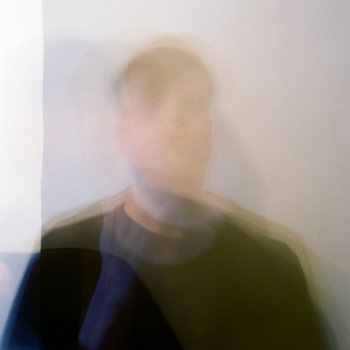
Oregon Crisis was recorded live at Holocene in Portland, Oregon whilst on tour with Blanck Mass and Steve Hauschildt.
Saxophone samples courtesy of Karl D'Silva. String samples originally recorded by JG Thirlwell at 30 Below, NYC.
More information can be found here.
Read More
- Administrator
- Albums and Singles
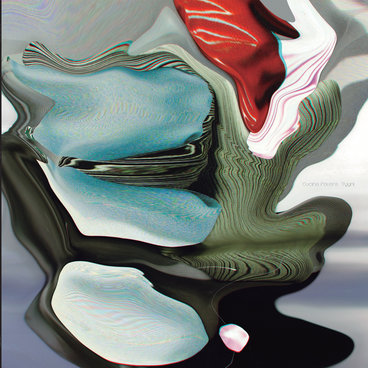
Tyyni is the third album by Finnish-born sound artist and musician Cucina Povera aka Maria Rossi. The second album recorded using a more studio-based scenario – as opposed to last year's Zoom, a collection of in-situ, spontaneous recordings– Tyyni feels like a slowly unfurling mediation on the clash between nature and mechanical living, a rumination on the complexities of modern life that begin to unveil more about the inner landscape of the artist as it progresses.
A Finnish word referring to still, serene weather, the title belies a new note of turmoil in Cucina Povera's soundworld. Tyyni represents a more detailed focus on the sculpting of sounds that curl around Rossi's hymnal vocal performances. It's a more adventurous work than Rossi's previous output that goes further into noise elements and vocal abstraction while maintaining the balance and ecclesiastical ecstasy of her debut Hilja.
While tension at the core of Cucina Povera is always prevalent, previously it was organic sounds that were used to counterpoint Rossi's singing but on Tyyni these are often replaced with aggressive synths and distortion, profane clashes with the seemingly sacred hymns. Whether close mic'd and intoning in a loop or in full flight, Maria Rossi's voice remains in the foreground, set here against a more synthetic backdrop. This development builds new worlds for Cucina Povera, a digital environment which brings in a sense of the alien for Rossi's vocal to duel.
For an artist with such a singularly unique musical language, Cucina Povera is continually teasing new strands and emotive tones from an evolving palette. Most importantly, Tyyni appears to be pulling back the veil to uncover an artist finding a synergy between her own emotional inner world and practice. As such, on her third album, Maria Rossi has found a third way between abstraction and extraneous emotion, personal experience turned inside out to reveal more about the listener.
More information can be found here.
Read More
- Administrator
- Albums and Singles
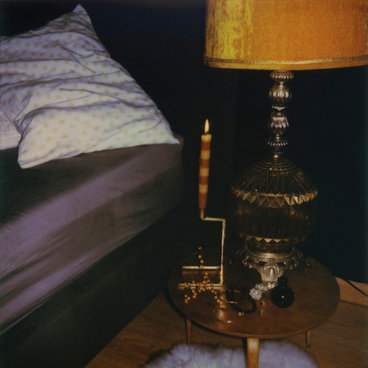
For an artist whose career is almost entirely improvisational, TALsounds has refined a stunning style of music that sounds as meticulous as it does surprising. Since picking the moniker nine years ago, Natalie Chami has been flitting between experimental electronica, mood-driven minimalism, and classically trained choral singing as a solo artist in Chicago. On her fifth album, Acquiesce, she dives inward without constraints and invites the listener to do the same, to lose track of time, and to let emotion dictate what happens next.
Chami is a DIY staple within Chicago’s electronic scene as a solo artist, a member of Good Willsmith, and a frequent collaborator of Brett Naucke, Matchess, and others. Over the years, she's honed her skills onstage, particularly her ability to block out what’s happening around her to instead focus on her subconscious, letting it guide where she steers each song. Whether she’s opening for Merzbow or Mary Lattimore, Tim Hecker or Tortoise, Mdou Moctar or Kaitlyn Aurelia Smith, Chami is adept at fitting the unique vibe of each concert despite never actually deviating from her music’s core sound — a prime example of her percipience and sense of control.
Recorded at home as improvised sessions, Acquiesce is a fluid extrapolation of her thoughts, worries, and stresses, later trimmed down and reformatted into songs. Chami treats her voice like an instrument that breathes calm into interwoven electronic parts, often leaning into vowels instead of phrases, particularly the tall, forward sound of "i" words like "time," "find," and "decide." Performed entirely by Chami and produced by Cooper Crain (Bitchin' Bajas, Cave), Acquiesce is full of entrancing moments, be it the trumpet-like call in "Muted Decision," the typewriter beat of "Instance," the flickering vocals in "Else," or the alien-like glitching of "Dynasty." It picks up from the stirring sounds of her 2017 record Love Sick—named one of the best albums of the decade by Chicago Reader—and closes its eyes, as if in meditation, to reflect on what’s next.
"For me, it’s not about recording; it's about playing,” says Chami. "It's therapeutic, but sometimes I feel more weighted after I finish. It's like playing gets me to confront whatever I'm thinking about, even if I don't always find an answer."
The clearest example of improvisational healing in real time is "No Rise," an overlap of aquatic keys and shimmering synth trills. "No rise / there is no rise, I say / I'm breathing by my strength," she sings, repeating the phrase as if slowly counting down. "Breath is what gets you through anxiety attacks. Even when you feel your weakest, you’re able to find some control," explains Chami. "It's weird to read the lyrics afterwards and see what I said, because when I'm in the moment, I don't always realize what I need to say until after I've said it."
TALsounds made a name for herself within Chicago’s DIY electronic scene for her innate sense of feeling, flow, and fascination. With Acquiesce, she demonstrates not just how hypnotic her music is or how stirring her vocal range is, but how these two combine naturally for her as an improvisational artist — and she's poised to break out nationally because of that.
Acquiesce will be released on vinyl and digital formats on May 22, via NNA Tapes.
Read More
- Administrator
- Albums and Singles
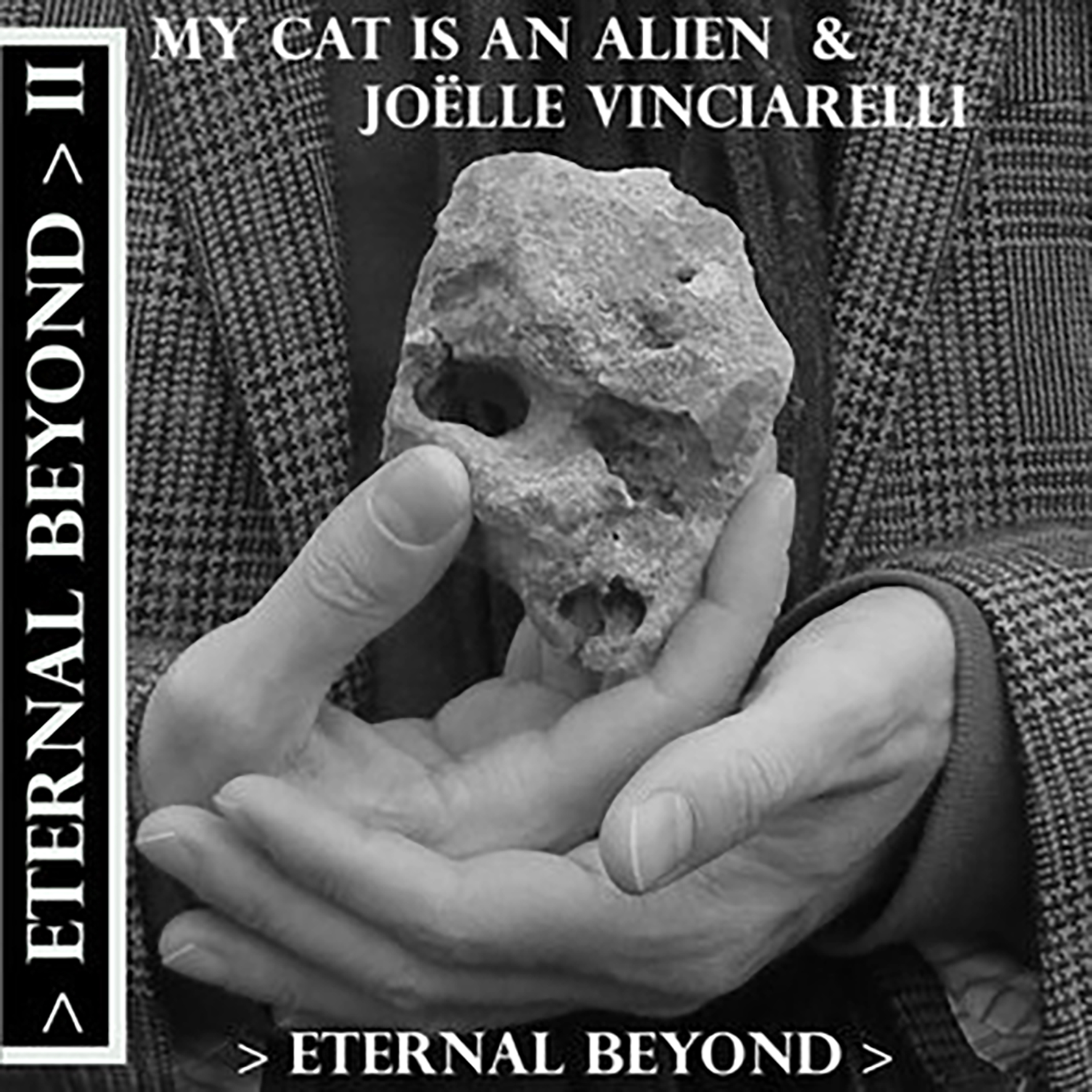 The Opalio brothers have had quite an impressive history of adventurous collaborations over the years, as they have been joined by many of the most iconic figures in underground music, as well as an inspired array of interesting folks that I had not previously encountered. Naturally, a number of those unions have yielded wonderful results, but one of my favorites was the Opalios' pairing with Talweg/La Morte Young's Joëlle Vinciarelli for 2016’s Eternal Beyond. Several other artists have gamely and effectively adapted themselves to the brothers' unique aesthetic and working method over the years, yet Vinciarelli is the one who was most successful at finding and filling a space that made the collaboration feel like something more than the mere sum of its parts. More specifically, she brings some welcome bite and visceral intensity to the Opalios' phantasmagoric and alien reveries. Consequently, I am absolutely thrilled to report that this trio has now become a recurring project and that Eternal Beyond II is every good as its predecessor (if not even better).
The Opalio brothers have had quite an impressive history of adventurous collaborations over the years, as they have been joined by many of the most iconic figures in underground music, as well as an inspired array of interesting folks that I had not previously encountered. Naturally, a number of those unions have yielded wonderful results, but one of my favorites was the Opalios' pairing with Talweg/La Morte Young's Joëlle Vinciarelli for 2016’s Eternal Beyond. Several other artists have gamely and effectively adapted themselves to the brothers' unique aesthetic and working method over the years, yet Vinciarelli is the one who was most successful at finding and filling a space that made the collaboration feel like something more than the mere sum of its parts. More specifically, she brings some welcome bite and visceral intensity to the Opalios' phantasmagoric and alien reveries. Consequently, I am absolutely thrilled to report that this trio has now become a recurring project and that Eternal Beyond II is every good as its predecessor (if not even better).
Elliptical Noise/Up Against the Wall, Motherfuckers!/Opax
I have not delved very deeply into Joëlle Vinciarelli’s work in Talweg at this point, but I have heard enough to grasp that "black metal" is a woefully inadequate and misleading term for her art.In fact, nothing about Talweg (or Vinciarelli) is remotely conventional at all, which is perhaps why she makes such a perfect foil for her fellow Alps-dwellers.In her own way, she is every bit as genre-defying and radical as the Opalios, but the key difference is that she is driven towards earthy, timeless, and primal forces rather than looking towards the stars for inspiration.Consequently, the improbable collision of Vinciarelli’s "Cro-Magnon grunt and cultic energies" with the Opalios' mind-melting, deep space lysergia is a perfect, unholy union, enhancing the brothers’ smeared and disorienting psychedelia with a healthy dose of seismic, elemental power.That said, it seems like Vinciarelli also brings out some of those normally latent elements in the Opalios themselves, as the churning and jangling intensity of the opening "Eternal Rage Against the Dying of the Light" is driven primarily by the brothers' violent misuse of an "antique upright piano soundboard."
It is truly impressive that Maurizio and Roberto managed to unleash such an apocalyptic cacophony in real-time, as the crescendo of "Eternal Rage" sounds like a heaving maelstrom of countless rusted steel strings being viciously attacked at once.There are a lot of other great and unexpected elements to the piece as well, however, ranging from sharp metallic scrapes to looping, angelic vocal melodies.And, of course, there are also the expected elements: disorienting falsetto vocal drones, buzzing electronics, and howling eruptions of noise.Happily, all of those various threads coexist quite organically and seamlessly, resembling an inspired collision of an ancient throat-singing ritual, a pack of howling wolves, and a goddamn supernova.Unsurprisingly, those ingredients make for quite a potent cocktail and "Eternal Rage" easily ranks among the best MCIAA pieces in recent memory.
The album's shorter second piece is considerably less extreme, as it is largely centered on the chiming of an "old pendulum clock mechanism."In fact, once Vinciarelli's melodic, wordless vocals appear, "Eternal Ectoplasmic Communication" almost feels like a lullaby of sorts.That resemblance does not last particularly long, however, as that melody gradually wanders off course as queasily lingering electronics and Maurizio's broken-sounding self-made string instrument creep in to curdle the idyll.The overall experience feels akin to waking up in an unfamiliar house to find a supernatural fog slowly rolling out of a haunted antique clock.While it never quite catches fire or builds towards anything more substantial, it casts quite an effective spell of seething uneasiness and the strangely warbling vocals call to mind a beloved stuff animal that is trying desperately to warn me of imminent peril, but is too paralyzed with fear to do anything but gibber helplessly.While it is quite a solid and likable piece, the earlier "Eternal Rage" unavoidably steals the show on Eternal Beyond II, as it beautifully transcends everything I usually expect from MCIAA. "Eternal Ectoplasmic Communication," on the other hand, feels a bit more familiar (and considerably less apocalyptic).
It is hard to explain why I love the Opalio brothers' albums with Vinciarelli so much without making it sounds like their other albums are in some way lacking, but I will try anyway: a "normal" My Cat is an Alien album is like a window into someone else's deeply weird and inscrutable dream (and I can think of no one else who reliably conjures up otherworldly vistas as strange and absorbing as those of the Opalios).When Vinciarelli is involved, however, it feels like that dream state is tenuously anchored to a recognizable physical world rather than a straight-up free fall into a bottomless rabbit hole of swirling, nightmarish unreality.Plunging into that altered state is always a compelling experience, but it is a more profound and dynamic one when I can still see distant vestiges of what I left behind (nods to conventional scales, scraping metal, guttural voices).In essence, it is a matter of grounding and contrast.No one does deep space psychedelia better than My Cat is an Alien, but with Eternal Beyond II, the Opalios and Vinciarelli evoke something significantly different that I cannot find anywhere else: thesingular collision of the imagined past versus the imagined future, the spectral versus the corporeal, and flesh-and-blood humanity versus the unknowable, abstract vastness of the cosmos.
Samples can be found here.
Read More
- Administrator
- Albums and Singles
 I am generally not someone who believes that everything happens for a reason or that tragedy breeds great art, but I do think that the emotionally fraught and unusual circumstances surrounding the creation of Red Sun Through Smoke steered Ian William Craig in a direction that feels uncannily appropriate for the current moment. Craig's original plan was simply to sequester himself for a couple weeks in his grandfather's empty house in Kelowna, British Columbia while he wrote and recorded a new album. As it turned out, however, fate had quite a macabre cavalcade of unpleasant surprises in store for him, as Kelowna became surrounded by forest fires, his grandfather died, his parents moved into the smoke-shrouded house, and the woman he loved moved to Paris. Naturally, all of those events resulted in quite an intense swirl of emotions, but at least a correspondingly intense (and beautiful) album ultimately emerged from that fraught period, as the best moments of Red Sun Through Smoke distill Craig’s art to its simplest, most direct, and most intimate form.
I am generally not someone who believes that everything happens for a reason or that tragedy breeds great art, but I do think that the emotionally fraught and unusual circumstances surrounding the creation of Red Sun Through Smoke steered Ian William Craig in a direction that feels uncannily appropriate for the current moment. Craig's original plan was simply to sequester himself for a couple weeks in his grandfather's empty house in Kelowna, British Columbia while he wrote and recorded a new album. As it turned out, however, fate had quite a macabre cavalcade of unpleasant surprises in store for him, as Kelowna became surrounded by forest fires, his grandfather died, his parents moved into the smoke-shrouded house, and the woman he loved moved to Paris. Naturally, all of those events resulted in quite an intense swirl of emotions, but at least a correspondingly intense (and beautiful) album ultimately emerged from that fraught period, as the best moments of Red Sun Through Smoke distill Craig’s art to its simplest, most direct, and most intimate form.
When I listened to this album for the first time, one of the thoughts that immediately struck me was how much Craig’s creative trajectory uncannily mirrors that of Grouper's Liz Harris: both artists initially established themselves by carving out a distinctive style, then set about slowly dissolving that stylistic veil to reduce their palette to little more than a voice and a piano.As someone who loves what Craig can do with his arsenal of wobbly, hissing tape players, I cannot say that I unambiguously prefer this more naked approach to songcraft, but I certainly admire and appreciate his desire to make his art more honest and distilled.That said, Craig's transformation is still a work in progress, so Red Sun Through Smoke strikes an effective balance between his experimental/abstract side and his more songcraft-driven side.Both sides yield some wonderful results, but it is definitely the unadorned and heartfelt piano ballads like "Weight" and "Stories" that feel like the album's true soul and raison d’être.Admittedly, I have not historically been thrilled when an experimentally minded musician that I love decides to sit down at a piano to try their hand at nakedly intimate balladry, as people tend to fall into extremely familiar patterns with that instrument.Much like harps and harmoniums, it is deceptively easy to make a piano sound good, but extremely difficult to find and establish a distinctive voice.To his credit, Craig solved that problem beautifully in "Weight" by playing in an organically loose and fluid way that is shaped by the central vocal melody.There is a chord progression, but Craig seems far more interested in the way the notes linger and dissolve in the wake of his vocal phrases than he does in creating a structured foundation to sing over.Also, the rhythm feels far more dependent upon Craig's own breathing patterns than it does with any unchanging time-signature.
As far as I am concerned, "Weight" stands as both the album’s achingly beautiful centerpiece and the culmination of Craig’s evolution as a composer, as it seamlessly merges tender, lilting melodies with hiss-ravaged harmonies in near-rapturous fashion.The following "Comma" is similarly lovely though, as Craig's voice nimbly swoops and slides around in the higher registers in a way that would make a soul/R&B diva proud.Also, the underlying music captures Craig at his most inventively minimalist and texturally effective, as frayed swells of harmonized vocals provide an unconventionally ghostly and warbling backdrop.Craig later repeats that delightful trick once more with "Take," but the remainder of the album is generally an impressively varied suite of songs and vignettes that take his hyper-constrained palette in some very interesting and divergent directions.Granted, some of those directions work much better than others, as I cannot say that I would miss the a capella opener "Random" or the piano instrumental "Mountains Astray," but the hit-to-miss ratio is nevertheless quite an impressive one overall. I am especially fond of two of the more tape loop-based pieces, particularly the scratchy, disjointed, and rippling arpeggio layers of "The Smokefallen."The darker and more spidery "Last of the Lantern Oil" is quite haunting as well, as fragments of Craig's vocals warble and flutter in a haze of decaying, distorted, and deconstructed minor key piano chords.
Notably, "Last of the Lantern Oil" features some noises from a shortwave radio that Craig remembers fondly from his late grandfather's days as a ham radio enthusiast.Those sounds are not a terribly crucial part of the piece, but their impact on Craig's art cannot be overstated, as he has observed that "all of the sounds inherent to that process, from the crackling static to the disembodied voices breaking up to the glissando of the frequency dial searching for connection, have directly informed what it is that I do."Craig's grandfather also deserves some credit for his decision to partially move away from that aesthetic, however, as Craig notes that his own interest in "themes of decay and forgetting" began to feel false as his grandfather increasingly deteriorated from dementia.I get that, but I personally hope that he continues dabbling with his decaying loops forever anyway, as that is what made me first fall in love with his work.I can certainly embrace Red Sun Through Smoke's more poignant balance of openness and emotional depth to abstraction and experimentation for now though.Moreover, I suspect that gradual transformation was not easy for Craig (given his reluctance to even sing on his early albums), but that unflinching and fearless examination of what he wants to say and how he needs to say it is precisely why he has blossomed into one of the most gifted artists of his generation.I would not necessarily call this album raw, as Craig was very exacting in shaping how these pieces sound, but there has been a significant decrease in the amount of artistic distance that he allows to creep into his work. In fact, Red Sun Through Smoke is quite literally a diaristic album (the lyrics were culled directly from Craig's journal) and it is all the better for it.While I could probably make a strong case that some of Craig’s other albums have more great songs, none of them have left a deeper mark, taken more chances, or made a stronger statement than this one.
Samples can be found here.
Read More

